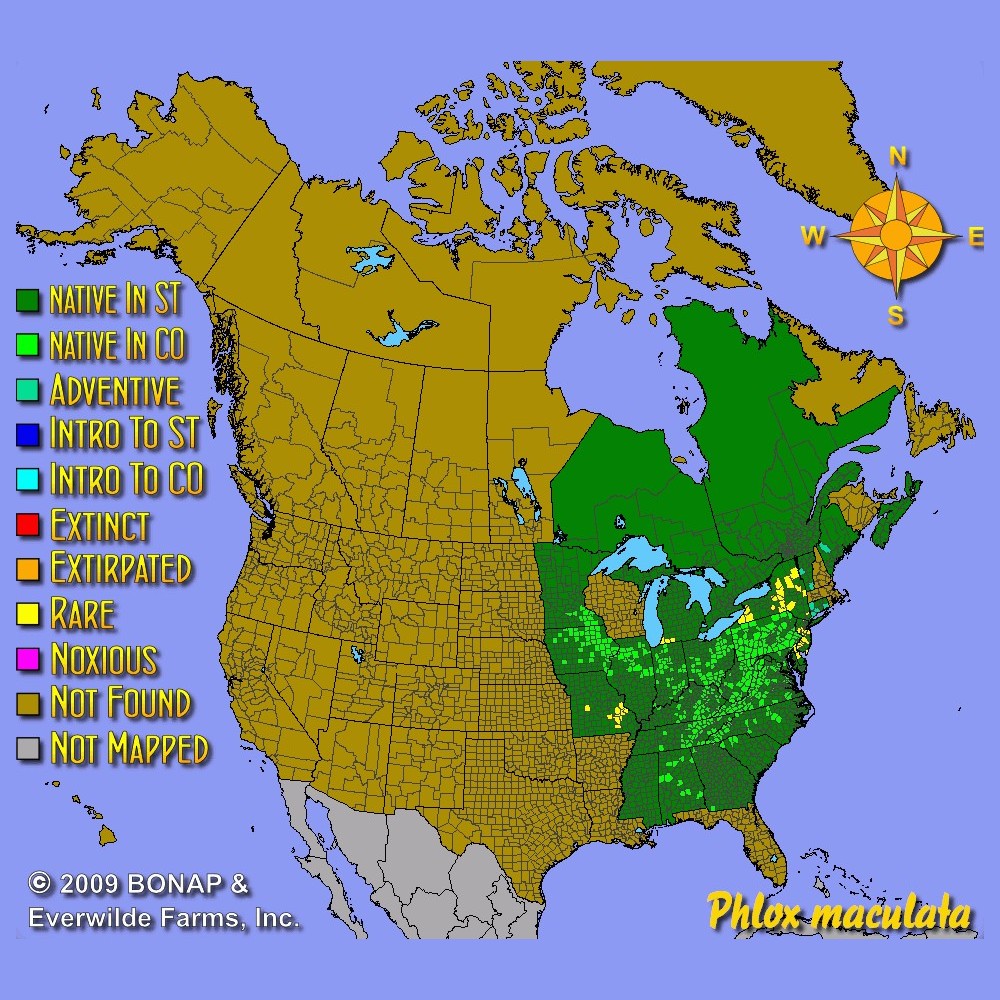Wild Sweet William Seeds
- HOW TO GROW
- FAST FACTS
- REVIEWS
HOW TO GROW
Sowing: Direct sow in late fall, planting just below the surface of the soil. For spring planting, mix the wild sweet William seeds with moist sand and store them in the refrigerator for 60 days before planting. Keep the soil lightly moist until germination. The Phlox Maculata seed can also be started indoors 6-8 weeks before planting in the spring; the best temperature for germination is 65 degrees F.
Growing: Water seedlings until they become established. To encourage branching, pinch back the tips as they grow. Mature plants cannot tolerate drought, since they prefer moist soil and will benefit from watering in dry weather. Deadhead for increased blooming. If seeds are not required, cut the plant back after blooming has finished. This plant often reseeds itself and spreads by rhizomes, and is highly attractive to bees, hummingbirds, and butterflies.
Harvesting: For cut flowers, choose stems with flowers that have just opened. Strip the foliage that will fall below the water level, and place in water immediately.
Seed Saving: After the wild sweet William flowers fade, small pods will form that eventually open and release their seeds. Gather the pods as soon as they have begun to turn brown, but before they burst open; watch them carefully to prevent loss, since the seeds can easily be blown away by the wind. Spread the pods out to dry. As soon as they have completely dried, break open the pods and remove the seed. Store the wild sweet William seed in a cool, dry place.
FAST FACTS
Common Names: Meadow Phlox
Latin Name: Phlox maculata
Species Origin: US Native Wildflower
Type: Native Wildflowers
Life Cycle: Perennial
USDA Zones: 4, 5, 6, 7, 8
US Regions: Midwest, Northern, Northeast, Southeast
Seeds per Ounce: 11,000
Stratification: Cold/Wet for 8 Weeks
Germination Ease: Stratify 8 Weeks
Sunlight: Full Sun, Part Sun
Height: 24 Inches
Color: Pink
Bloom Season: Blooms Early Summer, Blooms Late Summer
Uses: Attracts Pollinators, Hummingbirds, Aromatic, Cut Flowers, Deer Resistant
Didn’t grow
Disappointed. These were ones that I was really wanting and whether my fault or the seeds, either way they did not grow.
Sorry to hear of the poor results! Please contact sales@everwilde.com and we will ship you another packet or refund. These are a little tricky to germinate as they need stratification!
Lovely seeds
I haven't planted these yet, but the seeds look great and I'm a big fan of the packaging that Everwilde uses. Thank you
DESCRIPTION

HOW TO GROW
Sowing: Direct sow in late fall, planting just below the surface of the soil. For spring planting, mix the wild sweet William seeds with moist sand and store them in the refrigerator for 60 days before planting. Keep the soil lightly moist until germination. The Phlox Maculata seed can also be started indoors 6-8 weeks before planting in the spring; the best temperature for germination is 65 degrees F.
Growing: Water seedlings until they become established. To encourage branching, pinch back the tips as they grow. Mature plants cannot tolerate drought, since they prefer moist soil and will benefit from watering in dry weather. Deadhead for increased blooming. If seeds are not required, cut the plant back after blooming has finished. This plant often reseeds itself and spreads by rhizomes, and is highly attractive to bees, hummingbirds, and butterflies.
Harvesting: For cut flowers, choose stems with flowers that have just opened. Strip the foliage that will fall below the water level, and place in water immediately.
Seed Saving: After the wild sweet William flowers fade, small pods will form that eventually open and release their seeds. Gather the pods as soon as they have begun to turn brown, but before they burst open; watch them carefully to prevent loss, since the seeds can easily be blown away by the wind. Spread the pods out to dry. As soon as they have completely dried, break open the pods and remove the seed. Store the wild sweet William seed in a cool, dry place.
FAST FACTS
Common Names: Meadow Phlox
Latin Name: Phlox maculata
Species Origin: US Native Wildflower
Type: Native Wildflowers
Life Cycle: Perennial
USDA Zones: 4, 5, 6, 7, 8
US Regions: Midwest, Northern, Northeast, Southeast
Seeds per Ounce: 11,000
Stratification: Cold/Wet for 8 Weeks
Germination Ease: Stratify 8 Weeks
Sunlight: Full Sun, Part Sun
Height: 24 Inches
Color: Pink
Bloom Season: Blooms Early Summer, Blooms Late Summer
Uses: Attracts Pollinators, Hummingbirds, Aromatic, Cut Flowers, Deer Resistant
Reviews
Review
Didn’t grow
Disappointed. These were ones that I was really wanting and whether my fault or the seeds, either way they did not grow.
Sorry to hear of the poor results! Please contact sales@everwilde.com and we will ship you another packet or refund. These are a little tricky to germinate as they need stratification!
Review
Lovely seeds
I haven't planted these yet, but the seeds look great and I'm a big fan of the packaging that Everwilde uses. Thank you




